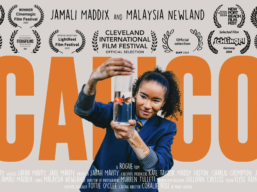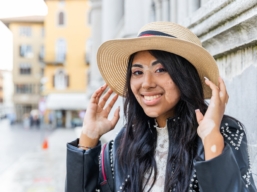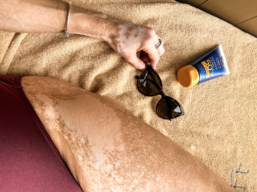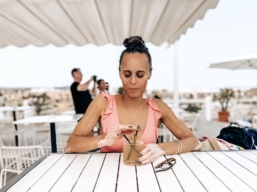
#Letstalkvitiligo: Why Our New Campaign Makes a Difference
If you are on social media, a member of the Society or simply stay close to community news, you will have likely seen our recent video campaign, #letstalkvitiligo. Released on the 19th March, the campaign was aligned with the release of a UK wide survey of over 700 people that revealed the impact vitiligo can have on a person’s life.
Since its release date, the campaign has done incredibly well. The video itself was a collaboration between trustees and Society volunteers who spoke candidly about how vitiligo has made them feel, some of the challenges they’ve faced and society perception. It was a touching video all made possible by a great team behind the scenes, including Gemma Davidson, Katy Davies and Dominic Santana that showed vulnerability, authenticity and represented how many of those within our community feel.
On social media, the video exceeded expectations! We shared on all our platforms with the most engagement on Instagram. The likes, comments and re-shares were instant, with our followers quickly sharing their own stories and experiences with the condition. At the end of the first week, the video has been viewed 84.4k times!
For me personally, it was a great campaign to be involved with especially given it was reaching out to you, our community with whom many of you I imagine, I can relate to. Listening to the stories of others really gives you a sense of togetherness and I’ve always said that ‘community’ is central to alleviating loneliness, feeling supported and feeling as though others can relate.
Some of the comments received on social media:
“I’ve had vitiligo from a child, in my teenage years and until 2017 I wore makeup to hide it because I was embarrassed about my condition. Being on Facebook and seeing so many people from across the globe with vitiligo, I was inspired to remove my makeup and finally love all of me!
“I had someone tell me my parents must be black and white because of my vitiligo spots. I was actually shocked by the ignorance but I sat him down and explained what vitiligo was to him. I’m happy, confident and comfortable in myself so I didn’t snap back and instead decided to educate him”.
“My vitiligo started started when I was 8 years old. I got bullied a lot during my teenage years and suffered so much while trying all kinds of treatments and doing everything I could to hide my skin. I stopped using products around the age of 17 and I turned it into my mission to finally accept myself. Now, as I turn 30, I finally learned to love my skin exactly as it is, and it is so exciting to see it changing as I grow. I am beautiful and so is my vitiligo. We all are”
“I’m 42 years old and have been living with vitiligo for almost 30 years. It’s been really difficult dealing with the scorn and prejudice but my confidence has grown over time. Thank you for bringing this important conversation to light”.
The Key Stats
The final and comprehensive report revealed some difficult stats to digest however, there were a few questions we really wanted to focus on because from an educational point of view, we wanted to publicly highlight the impact vitiligo can have on a person’s mental health and wellbeing. Here are some you may find of interest:
Health and Wellbeing
- The majority of people (79%) say having vitiligo has a negative impact on their appearance
- Nearly two thirds (63%) say vitiligo has a negative impact on their mental health and/or they feel insecure and self-conscious (64%)
- Half (49%) say it has negatively impact their social life and/or that they feel isolated and depressed (46%)
Diagnosis and Treatment
- A third of people with vitiligo felt dismissed (33%) and/or confused (29%) when they first spoke to their GP or healthcare professional
- Only 15% of people felt informed and a fifth felt scared and/or pessimistic
- 46% of people say their diagnosis helped them understand what vitiligo is
- 39% say there is a lack of support and guidance from healthcare professionals
Public Reaction
- 4 in 10 people say they are concerned about other people’s reactions to their vitiligo (39%)
- 38% struggle with being stared at or judged by others
Why Was This Report Crucial
This was the UK’s biggest survey conducted and its purpose was to understand how our community feels and how we can further improve and support the wellbeing of those living with vitiligo. Through this comprehensive survey, we wanted to gain more understanding of the physical, psychological and social implications of vitiligo, and identify more effective initiatives to support those affected by the condition. Awareness is a big part of the work we do and so understanding how those with vitiligo feel, is paramount to ensuring we educate the public in the right way.
Missed the press? Check out the links below for some of the current coverage:
BBC News
Sky News
Birmingham Mail
Key Takeaways
Vitiligo is one of the most psychologically devastating conditions because of its highly visible nature. It can significantly impact a person’s quality of life often causing daily worries and concerns. The key findings discovered as a result of the report and which we will focus on moving forward, includes:
- The importance of awareness and knowledge
- The vitiligo Journey
- A persons’ overall experience with the condition
- How it can impact a persons’ life
- Suggestions of what can be done differently to improve the lives of those affected by vitiligo
- Coping strategies and resources
- What change people with vitiligo would like to see
The report provided us with some in-depth knowledge around people’s overall concerns and their experience. However, what seems to be agreed across the board is the strong desire for increased societal awareness about the condition. Participants believe that more general awareness will foster a more inclusive and accepting society which can help them feel more supported and alleviate the negative feeling that can result from misconception and stigmatisation.
In addition to this, they would like this awareness and understanding to be increased in the healthcare setting and among professionals with the hope that in the future, healthcare providers will be more knowledgeable and informed about the condition and will be able to offer a more holistic way of managing vitiligo given there is so much more to vitiligo beyond what you see on the skin.
What Next
This survey marks the beginning of our commitment to continuing to support individuals with vitiligo. Through analysis and understanding gained from the results, we will continue to address the needs of those with the condition. It serves as the cornerstone of our future initiatives, continued conversations and how we tailor our work to raise awareness and foster a supportive community.
This was an incredible piece of work by the Society and took so much effort to put together in addition to publicising the findings in a way that people would listen. We have seen so much change within the community, with more people coming forward and revealing they have the condition, changes within Dermatology, the impact of social media and wider media interest, however there is still more work to be done. But what this report does do, is help us to shape the work we do moving forward that continues to put our community at the heart of the work we do….
Thank you again to all those that made this campaign possible and a success….
Please support our work! You've enjoyed 1 article this month and we hope you have found it useful. Our work is entirely funded by memberships and donations, so please consider joining our charity today and supporting our work.
Already a member? Log in





